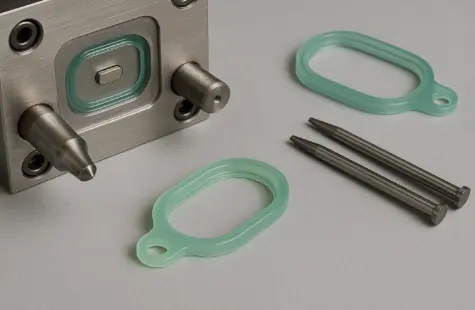In the world of advanced manufacturing, innovation doesn’t end with thermoplastics. Liquid Silicone Rubber (LSR) injection molding has emerged as a game-changer for applications demanding flexibility, durability, biocompatibility, and thermal stability. From wearable tech and baby care products to medical implants and automotive seals, LSR is reshaping how manufacturers design and deliver high-performance components.
For plastic injection mold makers, the shift to LSR isn’t just a material change—it’s a full-spectrum transformation of tooling design, process control, and engineering know-how. Let’s explore how they’re meeting the challenges of LSR injection with next-level innovations, and why OEMs are increasingly turning to these experts for solutions beyond traditional plastics.
Why LSR Injection Is Gaining Ground
Unlike thermoplastics, lsr injection is a two-part platinum-cured elastomer that starts in liquid form and is cured in a heated mold. This allows for excellent flow into tight geometries, faster cycle times, and minimal material waste. The end result? High-precision, flexible parts that remain stable across a wide temperature range.
According to a report by Grand View Research, the global LSR market is expected to reach USD 3.29 billion by 2030, growing at a CAGR of 8.1% from 2023. This signals a clear trend: industries are looking beyond rigid polymers in favor of elastomeric performance.
How Mold Makers Are Reengineering Their Approach
1. Precision Mold Design for Complex Geometries
Traditional mold design principles don’t directly translate to LSR. Toolmakers must adapt to challenges like flash control, venting, and parting line precision. For example, even a small gap in the mold halves can lead to flash due to LSR’s low viscosity.
To address this, many plastic injection mold makers are integrating micro-tolerance features and specialized shut-off designs into their molds. Hardened tool steel with mirror-polished cavities, precise ejection systems, and vacuum venting features are becoming standard for LSR tools.
2. Cold Runners and Valve Gates
LSR cures quickly under heat but requires a cold runner system to maintain its liquid state before injection. Advanced mold makers are now developing valve-gated cold runner systems that allow for consistent material flow, eliminate waste, and support multi-cavity production with precision.
One German automotive supplier recently collaborated with a custom mold maker to redesign their LSR mold for headlamp gaskets. The result was a 30% reduction in material waste and a 15% improvement in cycle time.
3. Automation Integration and In-Mold Sensors
Since LSR is ideal for high-volume applications, mold makers are incorporating automation features like robotic demolding, cavity pressure sensors, and real-time quality monitoring systems. These technologies not only reduce labor costs but also ensure repeatability.
In a recent medical device application, a U.S.-based mold maker integrated cavity sensors to track curing temperature and fill time in real time. This led to a 50% drop in scrap rate for overmolded silicone valves used in respiratory equipment.
Real-World Examples of LSR Innovation
Medical: Overmolded Seals for Inhalers
A multinational pharma brand needed precision overmolded seals for a new asthma inhaler. The LSR had to bond perfectly to a polycarbonate base. A specialized mold maker engineered a hybrid two-shot tool that allowed both materials to be injected in a single cycle. The resulting part met ISO 10993 standards and passed 1 million flex cycles without failure.
Electronics: Wearable Sensors
An Asian consumer electronics OEM turned to LSR for making skin-contact wearables. Their mold maker used a multi-cavity LSR tool with built-in degating and robotic demolding. This solution enabled a daily output of 40,000 units with minimal downtime.
Looking Ahead: The Next Wave of LSR Molding
With growing demand in healthcare, automotive, baby care, and electronics, mold makers are exploring hybrid tooling solutions that combine LSR and plastic insert molding. Some are even experimenting with multi-material molding, where LSR is combined with thermoplastics or metals to create soft-touch, functional assemblies in a single cycle.
As sustainability gains importance, LSR’s long life and recyclability add another layer of value. Mold makers who embrace green cooling systems and digital twin simulations are further helping OEMs meet ESG goals.
Final Thought
While thermoplastics will remain a staple in manufacturing, LSR injection is carving out a larger space in sectors where precision, performance, and durability matter most. Leading plastic injection mold makers who adapt their tools, systems, and strategies for LSR aren’t just keeping up—they’re setting new standards. For OEMs ready to step into next-gen product development, choosing an experienced LSR-focused mold maker can be the key to long-term success.
Also Read- Innovative Approaches to Human-Machine Interface Design in Industrial Automation

